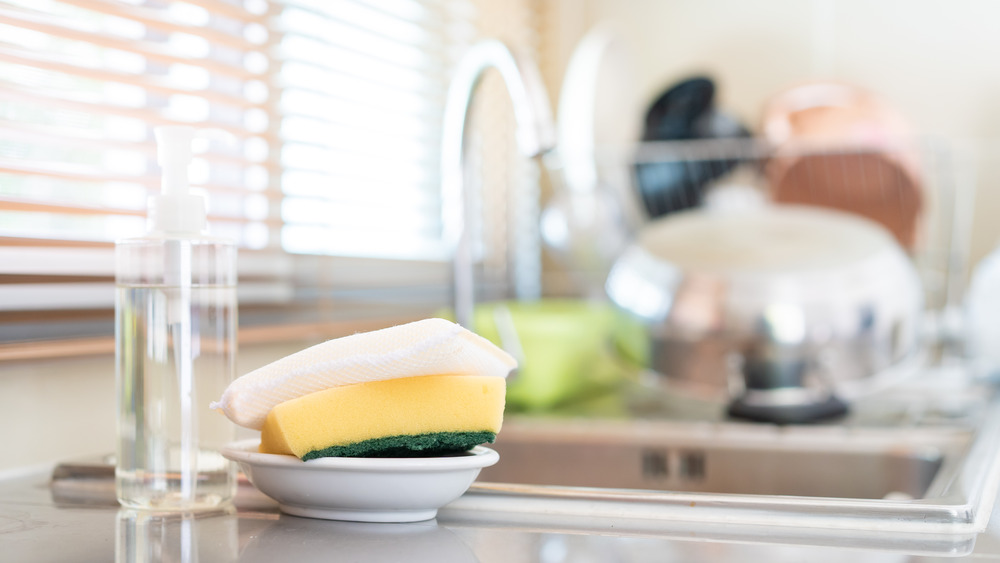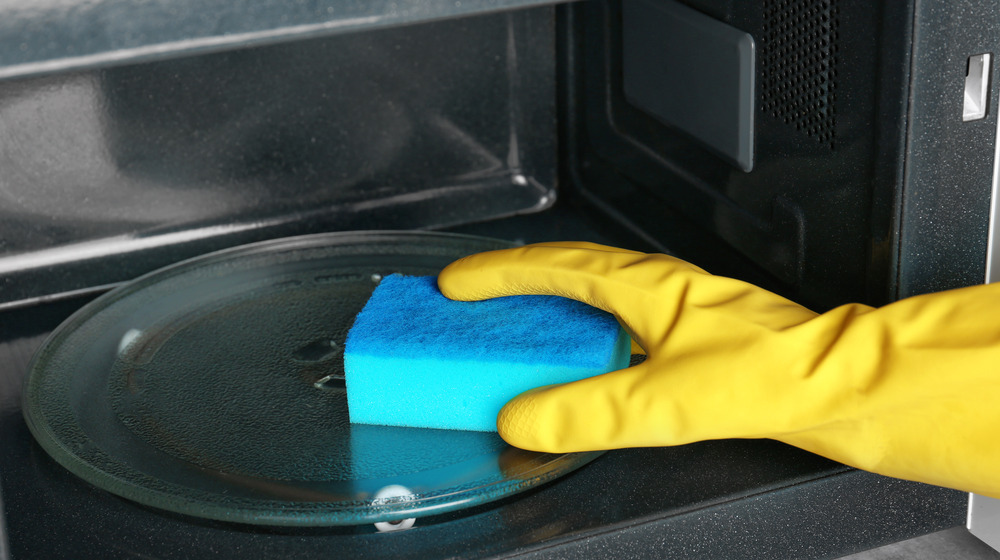The Kitchen Sponge Rule You Should Never Break
Most kitchen tools and equipment are meant to last for years with the hope that they will work even longer — but there is one specific item that needs to get replaced on a frequent basis: your sponge. Likely sitting on the edge of your kitchen sink right now, the porous cleaning aid lends its talent to more than just the dishes, as it is also often enlisted to wipe down the microwave, countertops, cutting boards, and maybe even clean up a spill on the floor.
With all the work that your sponge does on a weekly (and sometimes even daily) basis, it should hardly come as a surprise that the thing is full of bacteria. In fact, Time reported that one study conducted in 2017 found that the kitchen sponge harbors the most active bacteria in an entire house — even more than the toilet — some of which can lead to household members getting sick.
That being said, one important rule you should be following in regards to your kitchen sponge is replacing it on a regularly basis. Food Network suggests that this task should be done on a weekly or bi-weekly basis, with the rule of thumb being to ditch the tool "the instant it smells funky."
Kitchen sponges need to be sanitized daily, too
Okay, so you have a fresh sponge sitting at the kitchen sink and another new one ready to go for next week. Now what? According to Food Network, on top of regularly replacing the cleaning aid, it also needs to be sanitized every day to keep it as clean as possible.
There are a few methods of sponge sanitizing you could go with, one of them being in the microwave. As described by Food Network, to perform this duty, drench your sponge in water and nuke it in a microwave-safe bowl for one minute, then allow it to cool for 10 to 15 minutes before wringing out excess water. This is one of the most effective methods of cleaning a sponge, as it kills 99.9999 percent of bacteria. As noted by Good Housekeeping, soaking your sponge in a mixture of ¾ cups bleach and one gallon of water for five minutes will yield similar results in regards to eliminating germs.
The dishwasher is also an easy way to sanitize a sponge. Per Food Network, simply place it on the top rack of the machine, which you should set at "the hottest and longest cycle with the option of an additional dry cycle." This method has been proven to kill 99.9998 percent of germs in a sponge. A fourth option is soaking your sponge in vinegar which, according to Good Housekeeping, will deplete the amount of germs infesting the tool by 99.6 percent.

